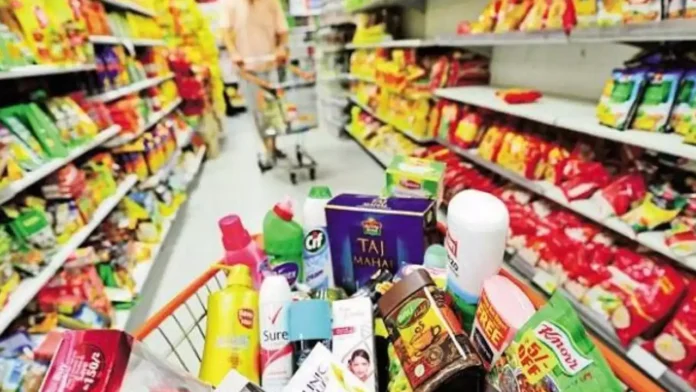The demand for daily groceries, essentials, and household products is expected to be muted in the current quarter, according to global research firm Kantar. However, it anticipates a rural-led recovery in the second half of FY25, with urban consumption potentially trailing behind.
In the March quarter, overall volumes, representing the number of products consumers purchased, increased by 5.2%, mirroring the growth seen in the previous three months up to December. Kantar’s data revealed that sales volumes in rural markets surged by 5.8%, while urban areas saw a 4.7% rise compared to the previous year. Kantar’s monitoring covers both branded and unorganized products, including bulk commodities sold without packaging. In contrast, Nielsen focuses primarily on tracking branded retail sales.
Saugata Gupta, Managing Director of Marico, remarked, “We experienced significant inflation resulting in shrinkflation or consumers opting for lower-grade products. However, the most challenging period seems to be over, and we now anticipate better growth ahead. We expect volume to increase, accompanied by some pricing growth. We are optimistic about achieving double-digit revenue growth.”
Continue Exploring: Rural markets outpace urban consumption in FMCG growth for the first time in five quarters: NielsenIQ Report
Shrinkflation occurs when pack sizes are reduced without a corresponding decrease in prices. Over the past two years, India’s price-sensitive consumer industry has encountered a demand slump following a nearly 25% increase in sticker prices by companies. This price hike was implemented to counteract rising input costs, initially triggered by global supply chain disruptions stemming from mobility restrictions and business closures imposed to curb the spread of the coronavirus.
Subsequently, historically low policy rates in the world’s wealthiest nations, along with the Ukraine conflict, caused commodity prices to spike.
However, over the past three quarters, companies have been slashing prices in response to a noticeable consumer preference for more affordable products. This strategy has aided them in reclaiming some of the market share they previously lost.
K Ramakrishnan, Managing Director of Kantar’s Worldpanel division in South Asia, anticipates subdued growth for at least another quarter, primarily due to the slowdown in urban areas. However, he expresses confidence in the revival of rural markets. He suggests that a strong performance in rural sectors could potentially drive growth back towards the latter half of the year.
Continue Exploring: Analysts optimistic as FMCG shares surge up to 10%, hint at ‘start of a catch-up rally’
He remarked, “The marathon that the snack category has been on since the onset of the pandemic is finally starting to slow down.”
India’s FMCG market expanded by 6.4% in the year that ended in March, a significant increase compared to the 1.2% growth witnessed the previous year. However, rural markets struggled to drive volumes. Nonetheless, most companies, including Hindustan Unilever, Britannia, and Dabur, have forecasted a demand revival in India. This optimism is buoyed by the prediction of an above-normal monsoon, which is expected to boost agricultural income. Moreover, higher spending initiatives by the new government in rural areas are expected to further support this resurgence.





